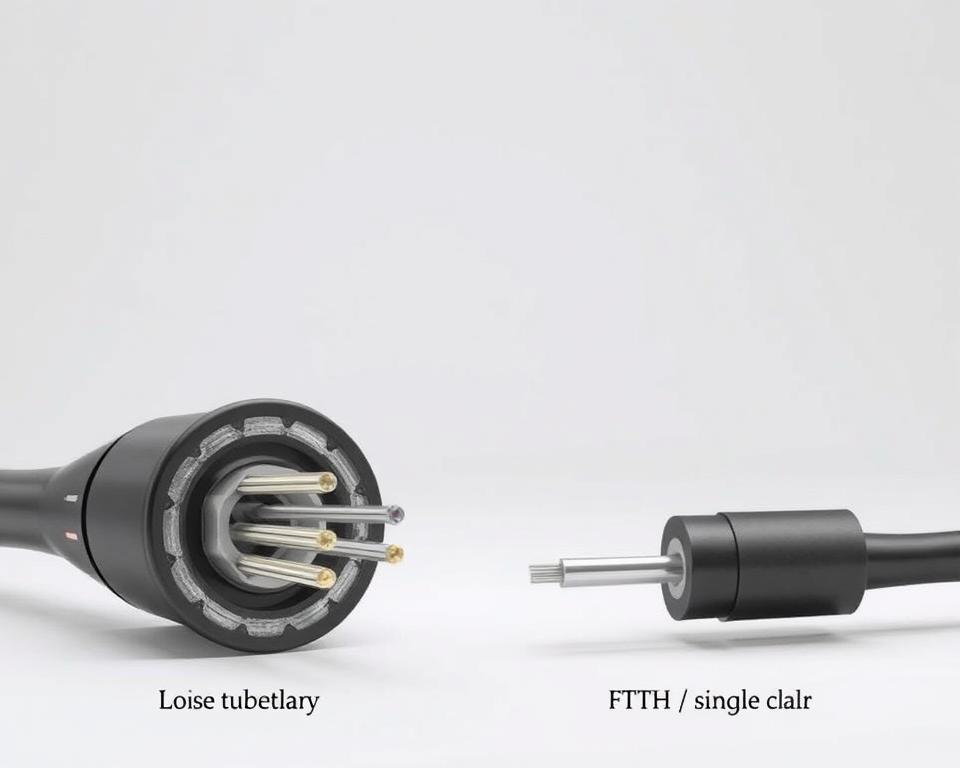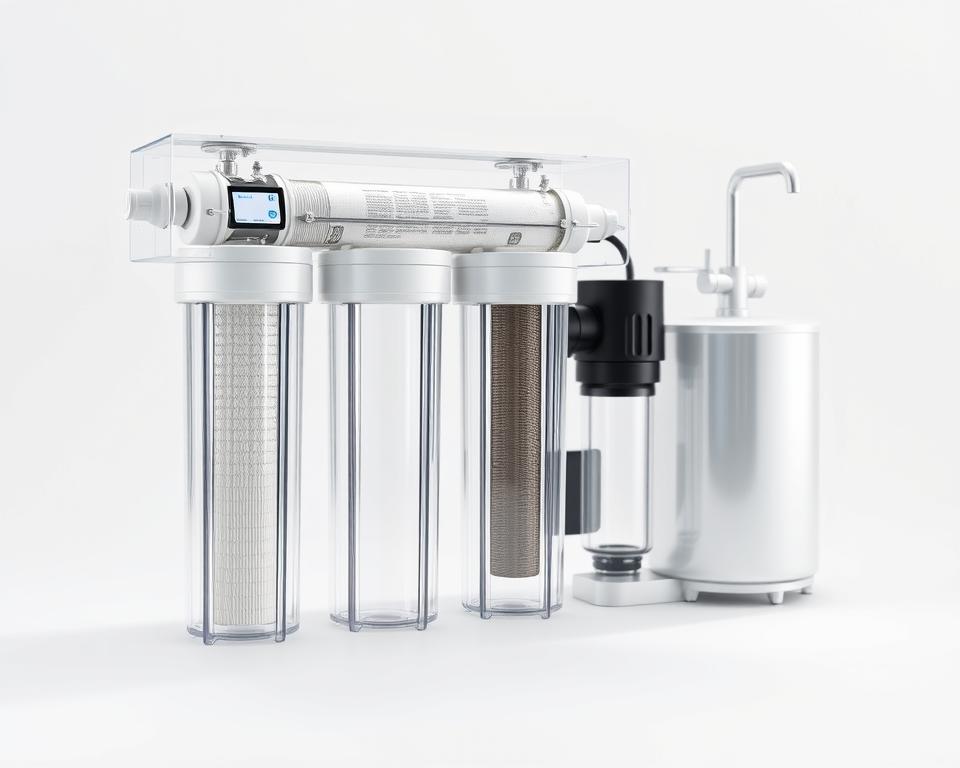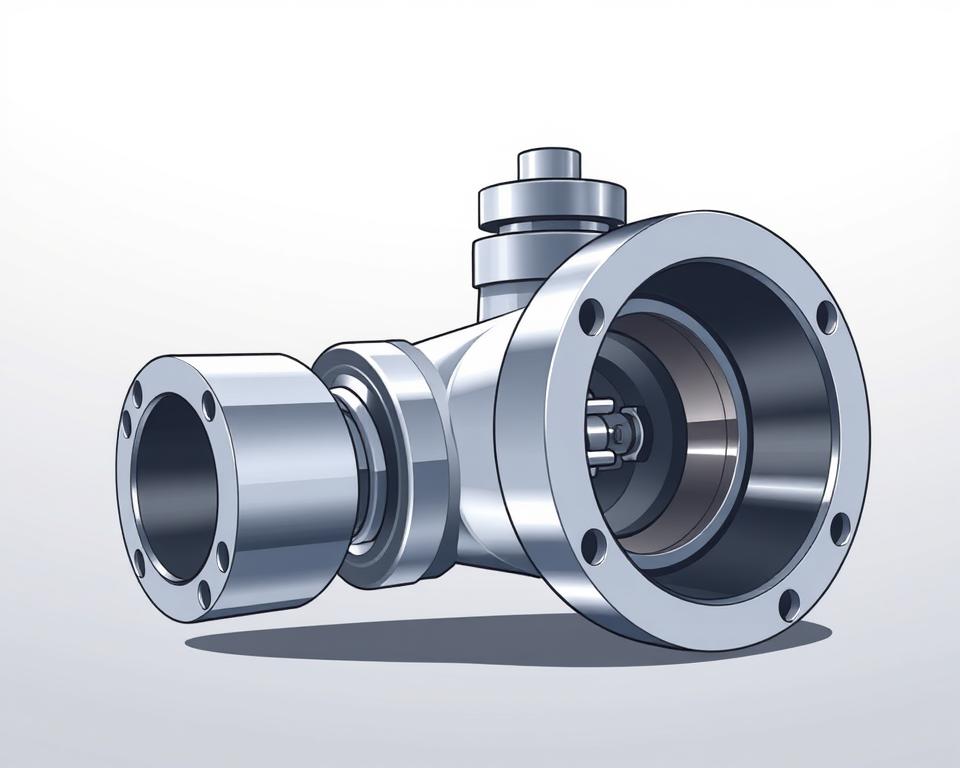Ultimate Guide to FTTH cable Production Line
Here’s a complete overview of the FTTH cable production line. This comprehensive article will explore the realm of fiber optic cables and their vital function in facilitating high-speed data transmission. As the demand for internet connectivity that is both faster and more reliable keeps increasing, understanding the fine points of FTTH cable production becomes essential. From the basics of cable infrastructure to the step-by-step manufacturing process, this guide will provide you with valuable insights into the production of fiber ribbone line.
This guide caters to both those who are new to the industry and those who wish to better their knowledge. We will explore the key components of FTTH cable systems, the role of optical fibers in FTTH technology, and the process of transforming raw materials into high-quality fiber optic cables. Furthermore, our discussion will include design considerations, stranding techniques, buffering and jacketing processes, and how to efficiently operate the FTTH cable production line.
Keep reading to learn about the advanced technologies that are changing FTTH cable manufacturing, along with the significance of testing and quality assurance in guaranteeing the reliability and durability of fiber optic cables. We will also cover the final steps of packaging and distribution, ensuring that the FTTH cable production line operates seamlessly from start to finish.
Key Takeaways:
- The FTTH cable production line is crucial in enabling high-speed data transmission.
- It’s crucial to understand the fundamentals of FTTH cable infrastructure and its main components.
- The production of FTTH cable, from silica to fiber, includes fiber drawing, coating application, and testing as sequential steps.
- Designing configurations and layouts that meet specific network requirements can optimize performance.
- Fiber benefits from the added support and protection offered by stranding techniques and central strength members.
Understanding FTTH cable Production Basics
To grasp how FTTH cables are produced, a clear understanding of the cable infrastructure, main components, and the function of optical fibers in FTTH technology is necessary.
Understanding the FTTH cable Infrastructure
The FTTH cable infrastructure is the system of cables, connectors, and distribution points that makes data transmission possible in fiber-to-the-home (FTTH) systems. This infrastructure serves as the foundation for high-speed internet connectivity, enabling smooth data transfer between the network of the provider and the location of the end user.

Essential Elements of FTTH cable Systems
FTTH cable systems consist of several key components that work together to ensure the smooth and efficient transmission of data. These components include:
- Fiber optic cables: These cables are responsible for carrying the data signals in the form of light. They are designed to provide high bandwidth and low signal loss, ensuring fast and reliable data transmission.
- Joining fiber optic cables to other cables or devices is a crucial role of connectors, which also facilitate connection and disconnection when needed. They ensure a connection that is both secure and reliable, thus minimizing signal loss.
- Distribution points: Distribution points are used to divide and distribute the fiber optic signals to multiple end users. Without negatively impacting the overall network performance, they help ensure each user receives the necessary bandwidth.
Why Optical Fibers are Key to FTTH Technology
Without optical fibers, FTTH technology wouldn’t be possible. These thin strands of glass or plastic are designed to efficiently transmit data signals in the form of light pulses. Their high bandwidth capacity, low signal loss, and resistance to electromagnetic interference make optical fibers ideal for high-speed data transmission.
Each fiber has a core that carries the light signals, and this core is encased in a cladding layer that reflects the light back into the core, preventing signal loss. Because of this design, optical fibers can transmit data across great distances without any loss in signal quality or speed.
Step-by-Step Process: From Silica to Fiber
How Fiber Drawing Creates the Core of the cable
In the FTTH cable production process, the first step is fiber drawing, which involves crafting the core of the cable. By pulling and stretching a silica glass preform, this process converts it into a long, thin fiber. For optimal performance, the fiber drawing process includes careful control of the fiber’s diameter. The quality and composition of the core are crucial in determining how efficiently and accurately the cable can transmit data.
How Coating Application Ensures the cable’s Durability
Following the fiber drawing process, coating application is the subsequent step. In this stage, a protective layer, known as a coating, is applied to the fiber. Acting as a buffer against external factors like moisture is just one of the purposes of the coating, which also improves the fiber’s long-term durability and reliability. The coating material is also carefully selected to have the necessary mechanical properties, guaranteeing that the fiber remains intact and protected during its entire lifespan.
Quality Control: Fiber Testing at Each Step
To ensure the fiber’s quality and performance, fiber testing is performed at different stages throughout the FTTH cable production process. During testing, the fiber’s physical parameters, like diameter, attenuation, and tensile strength, are measured, and the coating is checked for uniformity and how well it adheres. These tests are crucial for ensuring that the fiber meets the required standards and specifications, guaranteeing the overall quality and performance of the final FTTH cables.
| Production Stage | Parameters Tested |
|---|---|
| Fiber Drawing | Diameter, Attenuation, Tensile Strength |
| Coating Application | Coating Thickness, Uniformity, Adhesion |
Testing Parameters at Various Stages of FTTH cable Production: Table
This table provides a summary of the testing parameters that are measured at various stages of the FTTH cable production process. By conducting rigorous testing, manufacturers can ensure that every fiber used in the cables meets the required quality standards, ultimately contributing to the high-performance and reliability of FTTH cable systems.
Creating FTTH cable Configurations
In the realm of fiber-to-the-home (FTTH) cable production, cable configuration design is key to fulfilling network requirements and optimizing performance. Factors like network capacity, how easily it can be expanded, and the desired speed of data transmission are all part of cable design. Efficient deployment and maximized capabilities of their network infrastructure are achieved by companies that tailor cable configurations to their specific needs.
There are various FTTH cable configurations and layouts to choose from, each with its own set of advantages and considerations:
- The main distribution point is connected to each subscriber in a sequential manner in the Daisy Chain Configuration. For areas with a small number of subscribers, this configuration is a cost-effective solution.
- A direct connection between each subscriber and the central office or hub is characteristic of the star configuration. It’s a flexible design that’s easy to maintain, making it ideal for areas with a high population density.
- The ring configuration connects subscribers in a circular pattern. If the network fails, it still provides service without interruption because it has redundancy and can tolerate faults.
- A tree configuration involves the main distribution point connecting to secondary distribution points, which in turn connect to individual subscribers. This configuration allows the network to grow easily and is often used in areas where there are a lot of subscribers.
- Distribution points have multiple connections between them in the mesh configuration, which provides high reliability and redundancy. For applications where it’s essential that service never be interrupted, this configuration is commonly used.
Considering the network requirements and how much growth is expected in the future is essential when designing FTTH cable configurations. Factors such as how many subscribers there are, the geographical area, and what services are required will determine which configuration is best, as each has its own advantages and limitations.
By carefully evaluating these factors and collaborating with industry experts, companies can develop customized FTTH cable configurations that meet their specific network requirements and deliver optimal performance.
Equipment and Techniques Used in Stranding
To ensure the strength and durability of FTTH cables, stranding techniques and equipment play a vital role in their production. There are different stranding patterns that can be used, and each one has its own benefits and is used for specific applications. For cable production that is both efficient and of high quality, it’s essential to choose the right stranding machinery. Furthermore, the fiber receives extra support and protection from central strength members, which helps make the FTTH cables more reliable.
Various Stranding Patterns Explained
When producing FTTH cables, one of the main things to consider is which stranding pattern to use. Reverse concentric, SZ stranding, and helical stranding are examples of the various stranding patterns used, depending on the cable’s desired characteristics. Flexibility, strength, and resistance to things outside the cable can all be improved by the unique features that each pattern offers. Optimal performance and a long lifespan for the FTTH cables are achieved by carefully choosing stranding patterns that meet the specific requirements of the application.
Choosing the Right Stranding Machinery
Stranding machinery is a crucial component of the FTTH cable production line. It enables the precise formation of the stranding pattern while maintaining the required tension and alignment of the fibers. The right fiber secondary coating line machinery to choose will depend on things like the cable’s diameter, the speed of production, and how automated you want the process to be. Because advanced stranding machines are more efficient and flexible, manufacturers can produce a large number of cables and also offer customization.
Role of Central Strength Members
Central strength members are used in FTTH cables to enhance their mechanical properties. Stability is provided, tensile strength is improved, and the delicate fiber inside the cable is protected by them. Made from materials such as aramid or fiberglass, central strength members act like a spine, making the cable structure stronger and helping it resist external forces. FTTH cables are able to withstand the stresses of installation and maintain the quality of signal transmission thanks to them, which makes them suitable for different deployment scenarios.
Buffering and Jacketing: Protecting the Fiber
In the production of FTTH cables, the buffering and jacketing processes play a crucial role in protecting the delicate fiber inside. By going through these processes, the fiber is protected from many potential dangers, such as moisture, rubbing, and other things outside the cable that could harm how well it works and how long it lasts.
Buffering: Process and Importance
The buffering process involves applying a protective layer around the fiber, acting as a barrier against environmental elements. This layer’s job is to keep water out, as water can cause the signal to weaken or even the fiber to break. In addition, buffering improves the cable’s ability to withstand rubbing, which reduces the likelihood of damage when it’s installed or being worked on.
The buffering materials used must exhibit excellent adhesion to the fiber and possess a low coefficient of friction to minimize stress on the fiber. The selection of the appropriate buffering material depends on factors such as the environmental conditions the cable will be subjected to and the desired level of protection.
The Importance of Material Selection for Jacketing
Applying an outer layer to provide even more protection for the fiber and the buffering materials is called jacketing. Specific selection of the jacketing material is made to offer strong protection against mechanical stress, impact, UV radiation, and other potential hazards.
Things like flexibility, how well it resists fire, and its compatibility with the environment are all factors that are considered when choosing jacketing materials. Common materials used for jacketing include polyethylene (PE), polyvinyl chloride (PVC), and low-smoke zero-halogen (LSZH) compounds. Depending on the specific application and what the industry standards require, a material will be chosen, as each has its own advantages and disadvantages.
Using the Newest Technologies for Jacketing
FTTH cables now have much better protection thanks to the advancements in jacketing technologies. The newest technologies offer enhanced strength, greater flexibility, and better resistance to environmental factors, leading to improved durability and reliability.
One of the innovative jacketing technologies includes tight-buffered cables, where each fiber is individually buffered with a thin layer of plastic, providing excellent protection and flexibility. Micro-ducts are another technology, and they use strong tubes to hold multiple fibers, which allows for high density and makes cable installation versatile.
Specialized jacketing technologies have also been developed to meet the unique requirements of various industries. Armored jackets might be used on cables that are in harsh outdoor environments, for example, to give them better protection against rodents, moisture, and extreme temperatures.
Using the newest jacketing technologies allows FTTH cables to be made specifically for different uses, which ensures they work as well as possible, last a long time, and are reliable.
Understanding Operations in the FTTH cable Production Line
In the FTTH cable production line, efficient operations are crucial to ensure a smooth and streamlined manufacturing process. Every step in the production line is vital for creating high-quality fiber optic cables that make high-speed internet connectivity possible. Various machines and equipment are used to achieve the best possible efficiency.
The manufacturing process begins with the preparation of raw materials, including the silica used for fiber drawing. Then, the fiber drawing process commences, where the core of the cable is carefully crafted to achieve the desired specifications. Following fiber drawing, coating application is performed to ensure the fiber’s durability and protection.
To make sure the cables meet the highest standards, quality is the most important thing, and thorough fiber testing is done at every step of the production line. Factors such as attenuation, bandwidth, and signal loss are all tested as part of this process.
For the FTTH cable production line to work well, efficiency is very important. Manufacturers can get the most out of their production by using machinery and equipment in the best way, which reduces time and costs while increasing output. Furthermore, when the processes are efficient, the quality of the cables is generally better.
The manufacturing process can be complicated, with various stages and components involved. If manufacturers focus on efficient operations and always look for ways to make things better, they can enhance how efficient and effective their FTTH cable production line is.
To help you fully understand how the FTTH cable production line works, here’s a table summarizing the key machinery and their roles in the manufacturing process:
| Machine | Role |
|---|---|
| Fiber Drawing Machine | Produces the fiber optic cable core by pulling and stretching the silica material. |
| Coating Machine | Applies a protective coating to the fiber optic cable, ensuring durability and resistance to external factors. |
| Fiber Testing Equipment | Conducts various tests on the fiber optic cable to ensure quality and performance. |
| Spooling Machine | Winds the finished fiber optic cable onto spools for packaging and distribution. |
| Jacketing Machine | Applies an outer jacket to the fiber optic cable, providing additional protection and improving its handling. |
By using advanced machinery and technologies, manufacturers can make their production line operations more efficient, enhance their effectiveness, and deliver high-quality FTTH cables that satisfy the growing need for high-speed internet connectivity.
Cutting-Edge Technologies for FTTH cable Manufacturing
For the FTTH (Fiber to the Home) cable manufacturing field, which is always evolving, advanced technologies are key to improving efficiency and quality. As the demand for high-speed data transmission rises, automation, the integration of AI, and fiber coloring machines have completely changed the production process, sparking innovation and leading to the delivery of superior products.
The Impact of Automation on Fiber Optic cable Production
The automation of fiber optic cable production has significantly transformed the manufacturing landscape. The manufacturing process can be controlled very precisely thanks to advanced machinery and robotics, which leads to consistent quality and fewer errors. Because of this automation, more cables can be produced faster and with better accuracy, which ultimately saves money and makes customers happier.
Integration of AI for Quality Control
By integrating artificial intelligence (AI) into the quality control process, FTTH cable manufacturers can achieve unprecedented levels of accuracy and reliability. AI algorithms can analyze production data in real-time, identifying any deviations or anomalies that may affect the quality of the cables. This proactive method of quality control helps to minimize errors, make production more efficient, and guarantee that only the best FTTH cables are put on the market.
Capabilities of Fiber Coloring Machines
Fiber coloring machines have completely changed how FTTH cables are made by providing more options for customization. Fiber coloring machines can apply color codes to optical fiber strands, allowing for easy identification and efficient cable management during installation and maintenance. This technology eliminates the need for manual color coding, reduces the risk of errors, and enhances the overall efficiency of cable deployment.
Quality Assurance in Fiber Optics: The Importance of Testing
It’s of the utmost importance to ensure the highest quality in the field of fiber optics. Throughout the whole production process, strict testing and quality assurance steps are taken to make this happen. Standardized testing protocols are crucial for making sure fiber optic cables are reliable and consistent.
Steps to Implement Standardized Testing Protocols
Standardized testing protocols are set up to guarantee that each and every fiber optic cable meets the necessary quality standards. During every step of the production process, specific testing procedures and criteria that must be followed are outlined in these protocols. These protocols help manufacturers identify and resolve any potential issues, ensuring that only the highest quality cables are provided to customers.
Role of OTDR in Quality Checks
Performing quality checks on fiber optic cables relies heavily on the use of Optical Time-Domain Reflectometer (OTDR). A testing instrument that uses light pulses to measure signal loss and reflection along an optical fiber is called OTDR. OTDR traces are analyzed by technicians to find problems like bending in the fiber, loss of signal, or damage to the connectors. They can then find the precise location of any faults and take the necessary steps to fix them, ensuring the cable’s overall quality and performance.
How to Maintain High Quality Assurance Standards
Fiber optic cables are guaranteed to perform consistently and reliably because quality assurance standards are maintained throughout the entire production process. These standards cover various aspects, including material selection, manufacturing processes, and final product testing. These rigorous standards help manufacturers ensure that their products achieve the highest levels of quality and performance that the industry requires.
The Last Steps: Packaging and Distribution of FTTH cables
Packaging and distribution, the final steps in SZ stranding line production, are what this section is about. It’s crucial to ensure that the cables are packaged correctly and efficiently after they have been through all the different manufacturing processes, as this helps with their deployment and installation in the field. Protective packaging solutions are also key to making sure the delicate fiber optic cables are safe during transportation and storage. It’s essential to have efficient logistics and supply chain management to ensure that FTTH products are delivered to customers in a timely way and effectively meet their connectivity needs.
Efficient cable Spooling Techniques
For FTTH cables to be installed smoothly and easily, efficient techniques for spooling them are vital. cable spools provide a practical and organized way to store and transport the cables, reducing the risk of tangling or damage. By employing optimized cable spooling techniques, cable installers can save time and effort during the deployment process. When cables are spooled properly, the installation looks neater and more professional overall.
Best Packaging Practices for Fiber Optic cables
Using effective protective packaging solutions is essential to keep the delicate fiber optic cables safe when they are being transported and stored. The packaging should provide cushioning, absorb shocks, and resist external factors such as moisture, dust, and physical impact. Manufacturers can make sure the fiber optic cables arrive in perfect condition and ready to be installed by using high-quality packaging materials and techniques. The integrity of the cables is protected, and customer satisfaction is also improved by minimizing the risk of damage or the cables not working properly.
Managing Logistics and Supply Chain for FTTH Products
To successfully deliver FTTH products to customers, efficient logistics and supply chain management are essential. This involves carefully planning the transportation, storage, and distribution of the cables to ensure timely and reliable delivery. By managing the supply chain well, delays can be minimized, products can flow smoothly, costs can be reduced, and customer service can be enhanced..
Summary
To conclude, this ultimate guide to the FTTH cable production line has given a complete overview of how fiber optic cables for high-speed internet connectivity are manufactured. The importance of FTTH cable production line in enabling fast and reliable data transmission has been emphasized throughout the article.
Seamless communication, streaming, and online activities are facilitated by fiber optic cables, which play a critical role in high-speed internet connectivity. The durability and quality of these cables are guaranteed by the step-by-step process of FTTH cable production, which goes from fiber drawing to buffering and jacketing.
Advanced technologies, such as automation and AI integration, have revolutionized the manufacturing process, increasing efficiency and accuracy. Also, the reliability and performance of fiber optics are guaranteed by following standardized testing protocols and strict quality assurance standards.
The final stages of FTTH cable production are packaging and distribution, and these ensure that these essential cables are deployed efficiently and protected during transportation. The expertise and precision that go into the FTTH cable production line are essential for meeting the growing need for high-speed internet connectivity worldwide.


